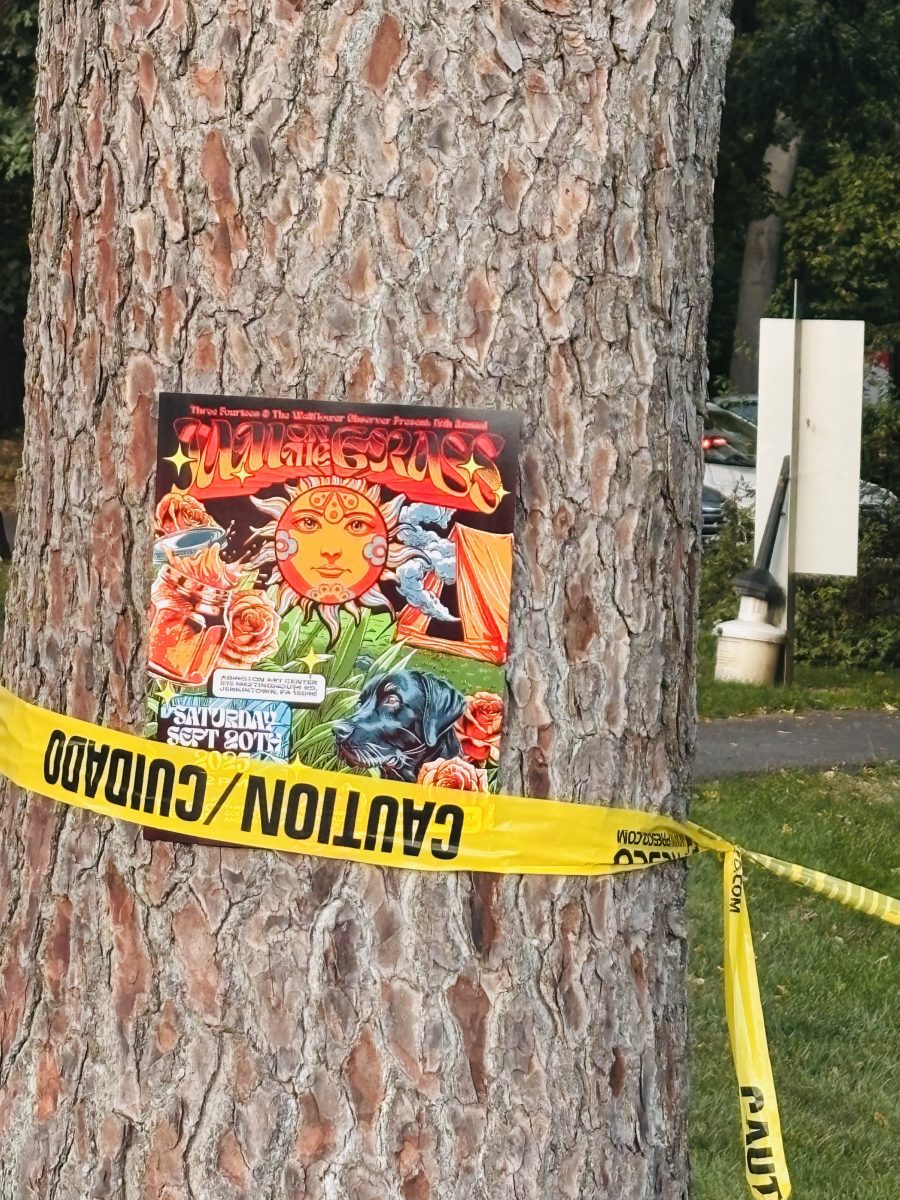by Ari Roth
Swans at Union Transfer reminded me why I love live music so much. Opener Jenny Hval, who released one of my favorite albums of last year, Innocence is Kinky, expanded her uncomfortably intimate, almost confrontationally, bare-bones songs into considerably fuller propositions, replete with a guitarist and drummer who both simultaneously added electronic textures to the sound. I missed some of the empty space, and it was hard not to feel slightly underwhelmed knowing the onslaught of sound that Swans was about to unleash, but her set was concise and enjoyable, especially a new song whose distorted bass pulse and stark intensity owed a clear debt to the headlining act.
Much has been made of Swans’ phoenix-like rebirth and supremely unlikely emergence to almost-pop prominence. The band, which began in the 1980s as Michael Gira’s howling, cathartic industrial noise/apocalyptic blues project, underwent several shifts throughout its initial lifetime, encompassing gothic folk, soaring instrumental epics, and even something like conventional song form before imploding following 1997’s pseudo-magnum opus, Soundtracks for the Blind. Gira retreated and released several quietly brilliant records as Angels of Light, but, for the most part, this was a period of relative calm, 13 years with no Swans activity.
Suddenly, in 2010, Gira announced the “reactivation” of the Swans project, and released My Father Will Guide Me Up a Rope to the Sky. This album was well-received, marking both a return to form and a new phase for the band, but the critical floodgates really opened with 2012’s The Seer. It’s a sprawling record that encompassed both extremes of the band’s sound, with subdued, gentle folk songs and instrumental passages building to unimaginable peaks, roaring with ecstatic force and the cumulative sound of Gira’s long experiment under the Swans banner. Improbably, Gira matched – perhaps even surpassed? – this feat with this year’s To Be Kind, an even longer and more intense record that retained the massive dynamics and range of its predecessor while adding a more pronounced dimension of groove and funk, highlighting the rhythm section to an even greater degree.
This last element, familiar to anyone who has seen them live, has long been the band’s secret weapon. This was my second time experiencing the band in the flesh, and it is no exaggeration to say that these considerable recorded achievements will never be matched by what Swans can conjure in a live setting. Gone are the acoustic passages and moments of relative calm, replaced by a monstrosity of sound and rhythm, a push-pull of dynamics and sounds that churn like a sonic maelstrom and culminate in a kind of out-of-body rush, with waves of sound that feel almost meditative once the initial fight-or-flight instincts have worn off.
At a climactic moment in the set, the stage lights suddenly turned on and bathed the audience in white light, acting as an appropriate visual metaphor for what was occurring onstage. Working entirely with material from To Be Kind and The Seer, such as “Bring The Sun”, “A Little God In My Hands” and “The Apostate”, the songs are transformed into near-unrecognizable forms, with Gira acting more as a conductor, shaping the sound and controlling the band with a series of gestures and screams, pushing them towards new realms of sound and intensity. Indeed, in this respect Gira is more like avowed heroes James Brown and Fela Kuti, closer to a bandleader than a musician proper, although his singing and guitar playing were also in fine form.
The band itself is extraordinary. Virtuosic yet disciplined and utterly committed to the sound as a whole rather than any individual voice, each player in the six-person ensemble contributes something vital, pushing himself to his limit in order to maintain the Swans’ sound. If there was any complaint to be made, it would be that the mixing did not quite do justice to the band itself, pushing the walls of guitar to the forefront and recessing the enormous drum sound in a way that slightly detracted from the rhythmic wallop.
Despite this criticism, Swans in 2014 remain a force to be reckoned with, perhaps the most committed, physically intense live band in existence. The 60-year-old Gira himself remains utterly possessed by the sound, writhing and shouting and, yes, even dancing, allowing himself to be consumed by the sheer massiveness of what he has created. Swans live have always been an endurance test, but what was once an antagonistic experience aimed to push the extremes of the body’s capacity for noise is now more of a celebration, a testament to the power of sound and rhythm to lift the spirit and body to new heights.







